Every time I visit the Sierra de Francia mountains, and I’m lucky I have family there so visits are regular, I fall in love with the place all over again. After life in Madrid it’s like a warm, peaceful security blanket folds around me.
With some wonderful (and incredibly good value) casas rurales and guesthouses throughout the area, it is the perfect place to unwind and enjoy some real Spanish rural tourism. In this post, I´ll share some knowledge about some of my favourite villages in the area along with recommendations of where to stay, and other tips.
Note – Please know, some of the external links on this page are affiliate links, this means that if you purchase after following one, I make a small commission from the sale at no additional cost to yourself.
You may also enjoy
Welcome to sleepy my piece of paradise
Though within relatively easy distance of Salamanca, it’s rumoured that throughout the Franco years the villagers of Casares de Las Huertas weren’t even aware there was a war raging.
While that isolation has diminished with the advance of good roads and communications, I’m still more likely to have a conversation with a resident about the condition of their apple trees, or who’s jumped the queue for the irrigation channels that divert the mountain streams to their crops, than the latest outpourings of President Trump (“Quien?”) or European Union politics.
It’s not that they can’t keep up with national and international news it’s just not important enough to intrude on real lives. It’s this internal focus over the centuries which has preserved rich community traditions and still values life at a slow pace.
Most settlers came from families of French origin around six centuries ago, giving the area its name and also its wonderfully alpine-feeling architecture. Almost isolated amongst the forested mountains, many small villages have grown up around the area’s centrepiece – the peaceful mountaintop monastery La Peña de Francia. Here are a few of my favourites . . . welcome to the villages of Sierra de Francia.
La Alberca
La Alberca is one of the largest of the villages to have grown up under the watchful eye of La Peña de Francia and is an ideal place to base yourself when visiting the region. It’s a handsome medieval town and as I stroll through the narrow streets I could easily imagine myself in the French Alps.
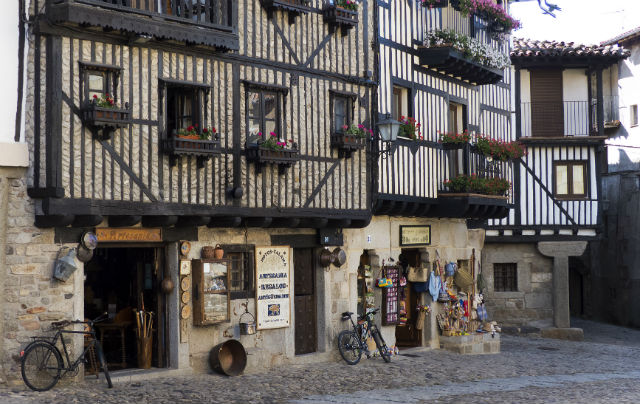
For me the thing that really stands out is the architecture – the narrow streets are sided by large stone and timber houses with dark wooden balconies awash with colour from the floral displays. It seems that all the neighbours try to outdo each other and the result is rather marvellous.
In the centre of La Alberca is the Plaza Mayor, giving the town its heartbeat. Coffee shops and restaurants are busy as people gather, as they do across the world, to gossip about the latest local scandal and, when I was visiting, small market stalls were selling local kinds of honey and ham.
Just around the corner you’ll find the church. It looks interesting and I’m sure it has a lot of history, but I was more taken by the random statue of a pig outside. Turns out it wasn’t random at all and is actually a monument to one of the town’s favourite events.
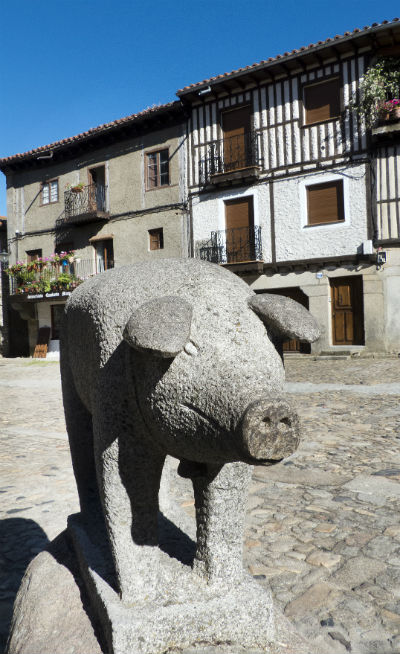
The statue is of El Marrano de San Antón (The Pig of St Anthony in English) and relates to a yearly tradition of having a pig live among them on the streets.
Each year, a lucky porker is blessed during a celebration on 13th July before being left to wander freely around the streets being fed by the generous residents. However, after six months the luck abruptly runs out as its time spent being the town’s guest of honour comes to an end when it’s raffled at the doors of the church to raise funds for the Brothers of St Antony.
Now I like to think a heroic local resident buys the pig each year and releases it, but more likely it ends up on a barbecue.
So what’s special about it and why should you visit La Alberca? Well, in all honesty, I can’t really put my finger one thing. But a little over 60 years ago, the village was one of the first in Spain to be given the legal status of an Historic-Artistic Monument for its architecture. So I guess that’s your answer, all of it stands out!
Recommended places to stay in La Alberca
Search more hotels in La Albera.
Monsagro
Translating to Sacred Mountain, Monsagro is always my base when visiting the region (as I get to stay free with family). It is a wonderfully tranquil village and quiet even by off the beaten track standards.
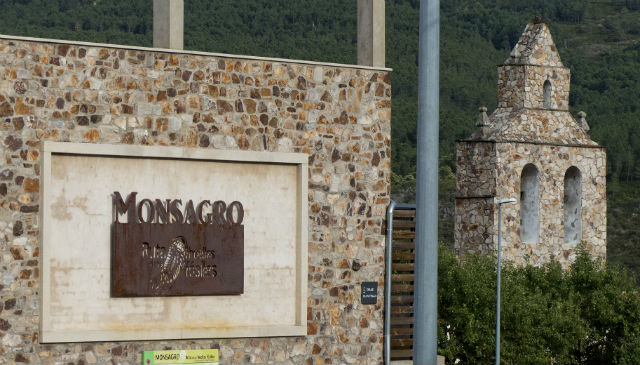
The main road between Salamanca and Ciudad Rodrigo (the largest town in the area) and La Peña de Francia (the main reason people visit the area) avoids this village completely, so it barely even appears on the map.
With only a handful of year-round residents (all of whom seem to spend most of the day sat on little benches outside their homes watching the world not go by), at certain times it truly feels like the village is deserted. However, in summer it comes alive as families return for their summer holidays and enjoy the village celebrations.
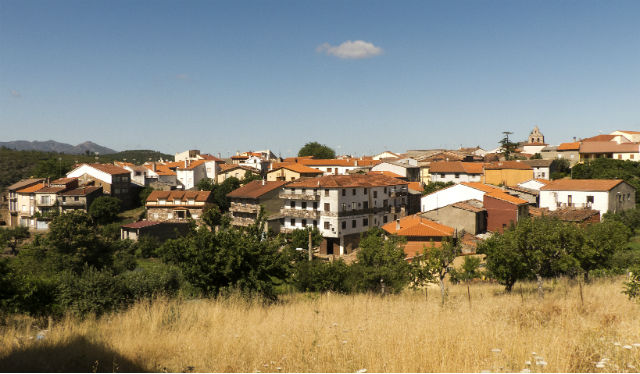
Monsagro’s main claim to fame is fossils. Millions of years ago this whole mountainous area was under water and fossilised remains of marine life are scattered throughout the rocks. Many of these fossils are now built into the houses and there is even a fossil trail you can take around the village.
Although the village may feel like a bygone era, that is not the case. The village mayor works closely with the University of Salamanca to promote the village and its fossils to the geotourism community and it even has its own app. That’s right, using the power of augmented reality, the fossils come to life as you wander throughout the village.

Aside from fossil hunters, Monsagro is perfect for hikers as it’s set in the middle of the Batuecas Natural Park with hundreds of kilometres of forested mountain paths alongside the river Agadón. And if you like your food, there is an amazing ham shop. The region is famous for Iberico Jamon, and here you can find some of the best, as well as delicious chorizo and other local produce.
Places to stay in Monsagro
There are two places you can stay in the village, a lovely small hotel complete with bar and restaurant, or if you want to do it all yourself, there is a simple, but cosy, casa rual complete with roof terrace.
Mogarraz
Possibly my favourite of the villages on this list, Mogarraz preserves the mountain architecture with a network of irregular, narrow and small streets along with spaces and cosy squares.
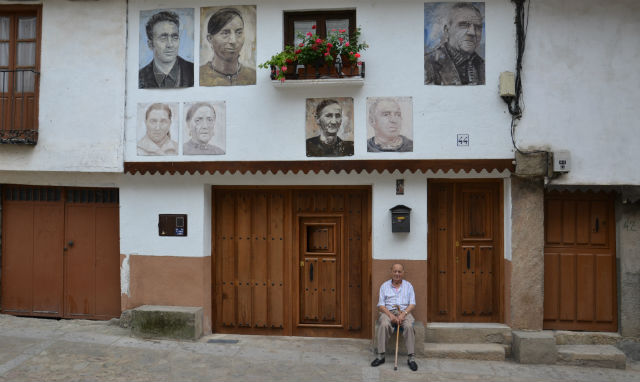
Built on quite a steep slope, it is another village in the area with the title of an Historic-Artistic Site for its historical and cultural heritage. You can easily just drive past and miss this village as the road runs above and past it. As it doesn’t allow cars, you have to park at the top and wander down.
There are two things that really make this stand out for me. Number one, wine. Now if you have read many of my posts you may well have realised that I do like the odd vineyard visit. Mogarraz is home to one of the region’s finest producers, La Zorra.
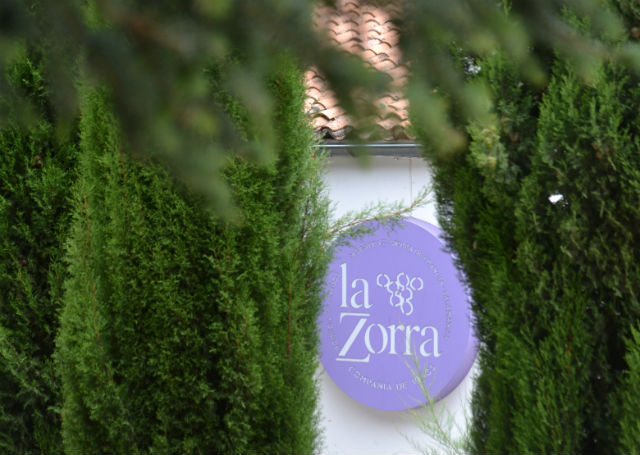
The village sits within one of Spain’s newest DOs – Denominación de Origen Sierra de Salamanca, and La Zorra stands out as one of the DOs best. Most of the wine is produced from a rare grape that is indigenous to the local area, Rufete, but also Aragones (the local name for Tempranillo).
You can book tours of the winery and do a tasting (highly recommended) and they have an English-speaking guide most of the time – sadly not when I visited but I had my translator with me, and the wine tastes great in any language.
But it’s not just La Zorra. As I wandered down to the main village square I saw many of the houses had signs above their garages advertising themselves as bodegas (Spanish word for cellar). Many people here make and sell their own wine too and while the quality can’t always be assured, there are some gems to be found and enjoyment to be had by looking (and tasting).
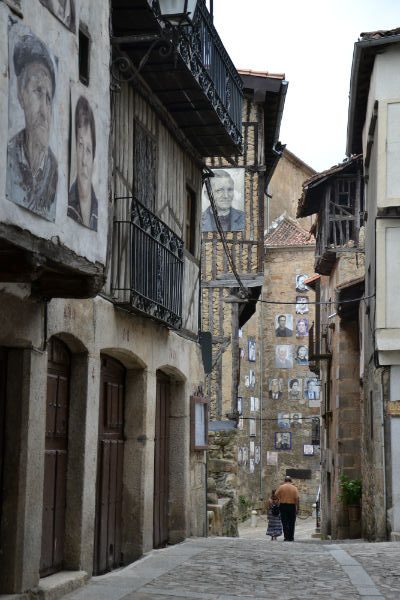
OK, so point number two that makes Mogarraz unique. Have you ever felt like you are being watched? Well wandering around here you will. What brings most people here are the stories of the portraits that hang outside almost every house, watching you as you tour the streets.
Giant canvas paintings hang from the houses with images painted by local artist Florencio Maillo and based on a series of 388 photos that were taken for identity cards in the 1960s. However, the village liked them so much that they asked the artist to continue and the portraits include current residents too.
This unique addition to the village makes wandering through it really enjoyable, if somewhat creepy. There is a small square with a couple of restaurants where you can recover before walking back up the hill.

Enjoy wine? Consider this tour from Salamanca
Explore the Sierra de Salamanca’s historic mountain villages and indulge in expert-led wine tastings of ancient grapes. Enjoy a Michelin Guide-listed lunch with wine pairing, all while traveling in air-conditioned comfort with convenient round-trip transfers from Salamanca.
Places to stay in Mogarratz
Apartamentos La Zurdina
Apartamentos Azahar
Apartamentos Anateresa
Search more places to stay in Mogarraz
San Martín del Castañar
Slightly larger than both Moggaraz and Monsagro, San Martín del Castañar has grown up around its main street with a church and castle at one end, a river complete with swimming area and bar at the other, and the Plaza Mayor in the middle.
The castle is located at the top end of the town and is free to walk around. Although not overly spectacular in itself, it does offer some fantastic views of the surrounding mountains and the Batuecas Natural Park.
Next to the castle is the bullring which people here say is considered to be the second oldest in Spain. Now I’m not sure who considers it to be, but I love the idea. I’d imagine that if you claim it is the oldest you’ll come under a lot of scrutiny and people will try to prove you wrong. But who’s going to refute the claim of second oldest?

This area is also where you’ll find another fine producer in the Sierra de Salamanca DO – Versos. I have a separate post about when I visited the Versos museum and ate there with my parents, I highly recommend it.
As you head down from the bullring you’ll pass the 16th-century church, dedicated to San Martín de Tours, but more importantly, next to it is one of the finest bakers in the region, the Panadería Y Dulces De Artesanía Sierra De Francia.
The region’s architectural style of high, wooden timbered houses continues to dazzle out as the road through the centre of the village reaches the Plaza Mayor, a large open square with the town hall, fountain as well as a few eateries and souvenir shops selling local crafts.
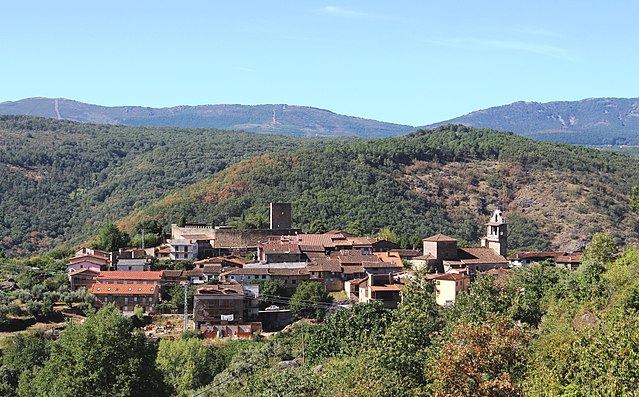
One of the stores opposite the town hall specialises in selling local produce. I had a good chat with the owner who was telling me the troubles that face the village.
He explained that the young ones growing up have no interest in learning the traditional way of life in the area, most of them leave to work in bigger cities such as Salamanca or Madrid and don’t come back. To help counter this he is spearheading a project that brings students in from all over Spain, they stay in the village and help farm, learning the culture and history.
I guess that rural to urban migration is something that affects every country but it’s nice to see some people and projects designed to help reverse the trend.
Finally, at the lower end of the town you will reach the river. Well, more of a stream that is a tributary to the larger Rio Francia. But this stream has a great little swimming area complete with outside bar. A perfect place to grab a drink and cool off after a hard day of touristing.
Where to stay in San Martín del Castañar
To be honest, I have no recommendations, but you can take a look for yourself, just click to search accommodation in San Martín del Castañar.
How to get to Sierra de Francia
As you’d expect, being so far out of the way, it’s not the easiest place to get to by public transport, not impossible, but you’re better off hiring a car if you don’t live in Spain and have one yourself.
The closest (largish) airport to the Sierra Francia mountains is in Valladolid, a city about two and a half hours away, however, you are much more likely to find flights to either Madrid or even Porto in Portugal, both are about 3 and a half hours away.
If you are set on public transport it is possible. To get to the villages you would need to first get to Salamanca, easily done from all major cities by train, and then hop on a bus to Cuidad Rodrigo, a small city at the entrance to the mountains. From here it’s another bus which goes through all the villages and runs about twice a week, so planning is definitely advised.
While I wish I could tell you it’s easy to get to, it’s not, but I don’t mind that. It is this difficulty that has allowed it to remain isolated for so long and preserve many of the traditional ways of life. It is this quietness that I love when I visit, feeling like I am the only one in the world that knows about this sleepy paradise. Now I may be contradicting myself by writing, and sharing it with (hopefully) the masses of readers, but if someone is willing to make the journey, I am willing to share one of the world’s rare, truly authentic places.
Your turn
So what does your paradise look like? are you a mountain, beach or city person, let me know in the comments and I’ll check it out!
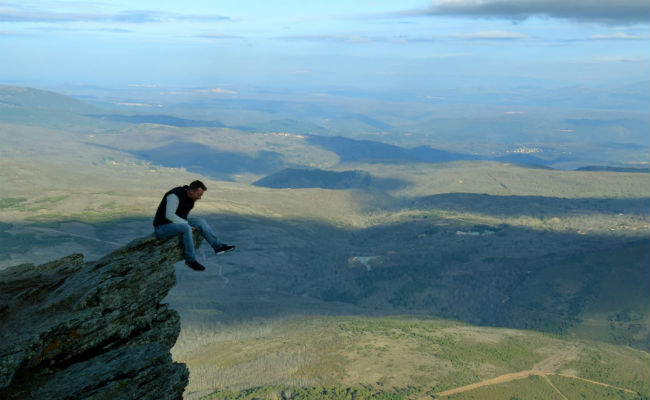
Are you a Travel Blogger?
If you want your blog to be added to our map be sure to check out our submit your blog page here: https://www.thetravelblogs.com/submit-your-blog
Search for travel blogs from Europe
[custom-mapping map_id=”1195″ height=”400″]
Recent blog posts from Europe
[pt_view id=”7c0c5a6gyb”]
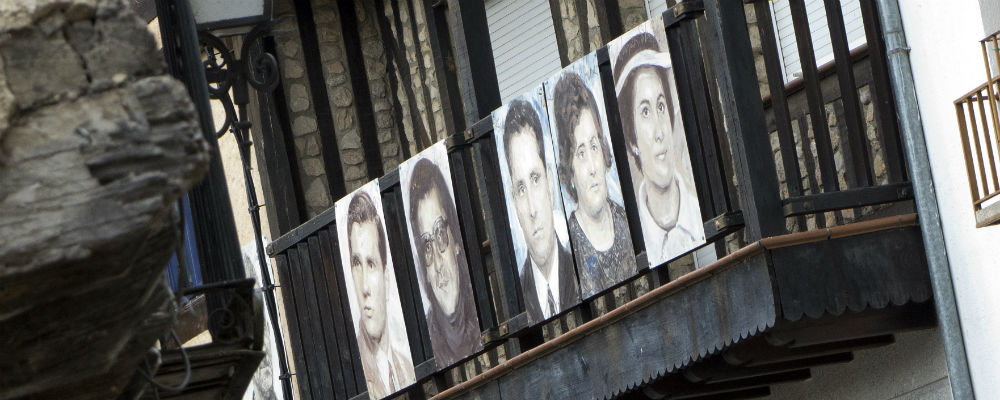
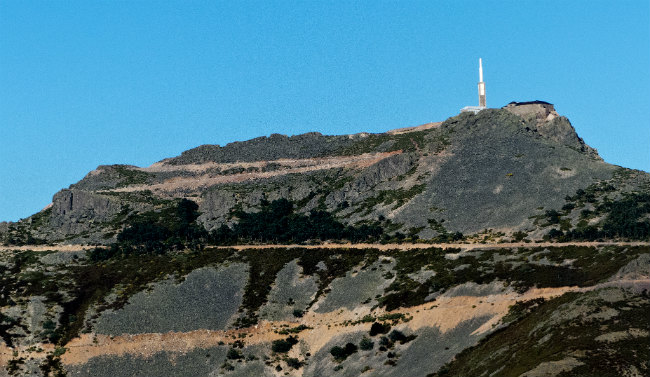
Wow, I love how serene this whole place is where you can truly feel the untouched beauty of all what it has to offer. The river looks like a great outdoor adventure to have a river trekking since it is the kind of adventure I would always love to experience. Thank you so much for sharing this with us.,
Looks like a wonderfully tranquil village. It’s often nice to visit the less touristy places instead of big cities and enjoy life as a local for sometime.
Looks like a lovely area. I went to Spain and Portugal but those two are one of my favorite countries to come back, so hopefully I can see places you recommand on my next trip
Wow these villages seem so untouched by time. And how unusual to have those pictures of residents displayed on the houses. Such an interesting area to visit. So quiet and peaceful for sure.
Wow so many quiet havens to escape to! Im lucky as i live in the countryside. But I love how you describes it like a warm blanket. Little villages and towns do feel that way. So glad you have somewhere peaceful and full of community you can escape to though.